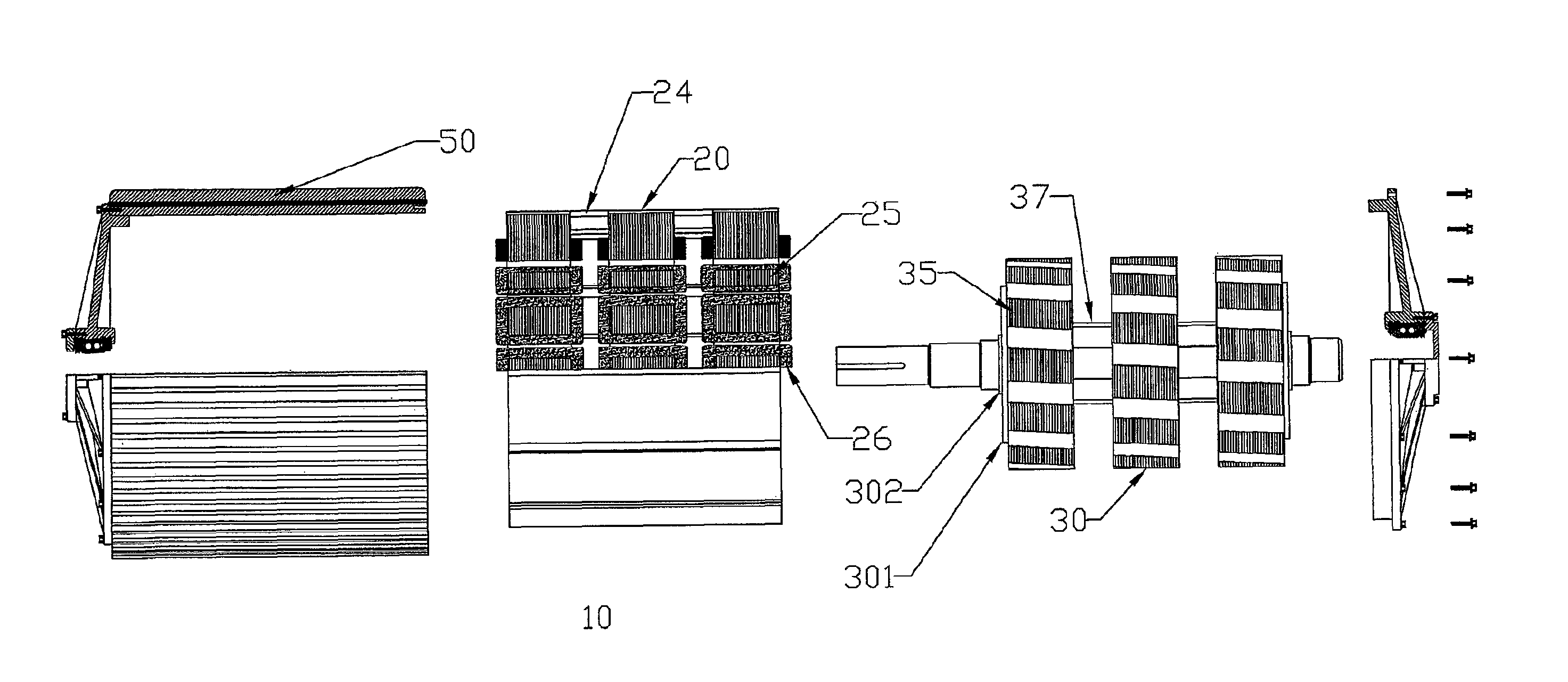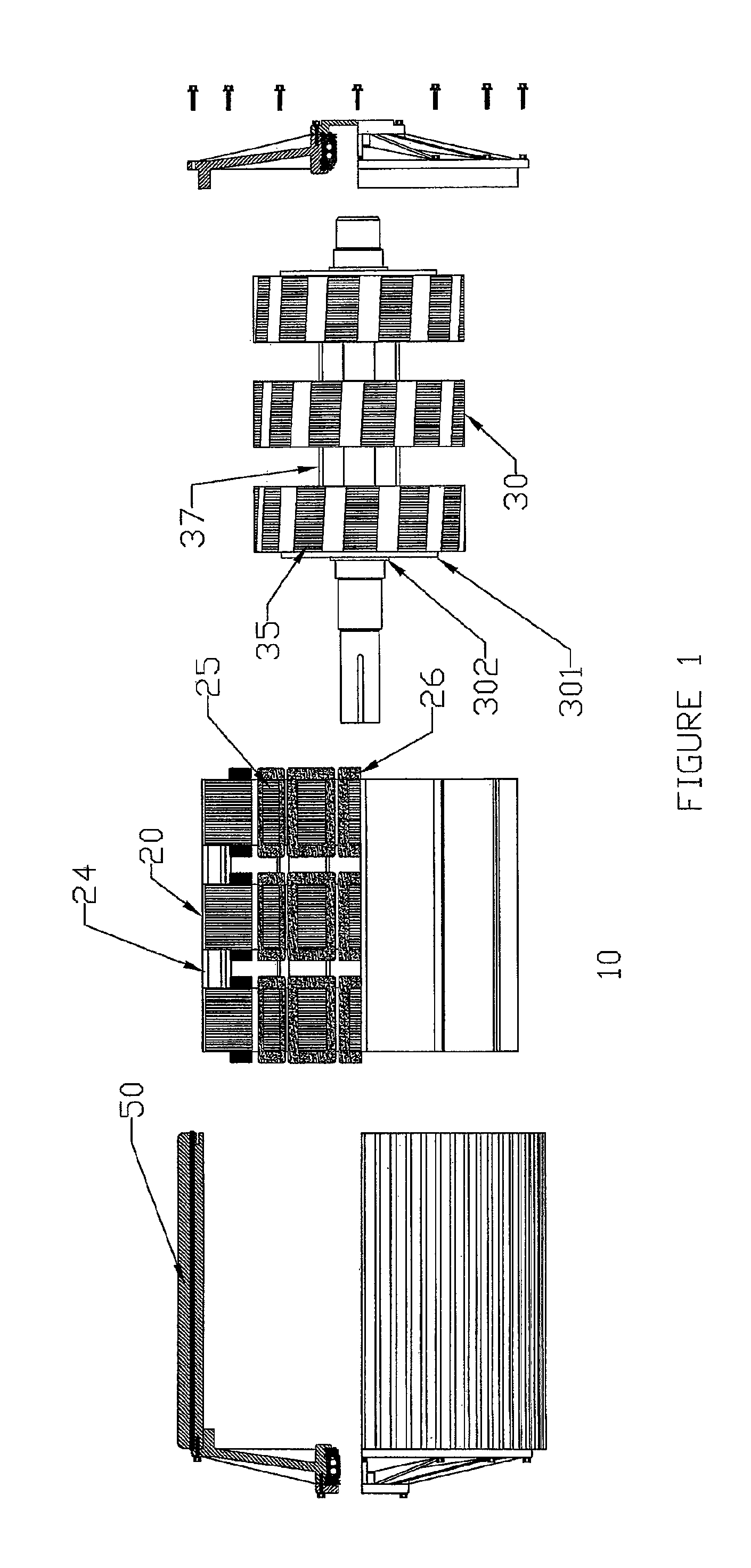Multistage variable reluctance motor/generator
a variable reluctance, multi-stage technology, applied in the direction of synchronous motors, magnetic circuit shapes/forms/construction, instruments, etc., can solve the problems of large torque ripple effects in the torque output of the machine, low torque available, structural distortion of the motor casing, etc., to improve the torque production capability and overall operating efficiency, and reduce the overall complexity. , the effect of reducing the complexity
- Summary
- Abstract
- Description
- Claims
- Application Information
AI Technical Summary
Benefits of technology
Problems solved by technology
Method used
Image
Examples
Embodiment Construction
[0056]The present invention will be further understood by reference to the following non-limiting example.
[0057]Referring to the drawings that are provided to illustrate preferred embodiments of the invention only, and not for the purpose of limiting same, FIGS. 1 to 5 illustrates a version of the invention, which having motoring / generating capabilities is suitable for use as a traction motor in large transport vehicles such as automobiles, highway and off-road trucks, buses, mobile mining equipment, marine propulsion systems, locomotive propulsion systems in which regeneration is a positive design attribute to reduce the energy consumption of these drive systems. As heavy duty industrial motors only, the invention can find a multiple of uses in such heavy duty service as pump drives, compressor drives, conveyor drives; while as heavy duty generators only the invention will be ideally suited for use in wind turbines, exhaust turbo generators, water turbines, stand-by power generatio...
PUM
| Property | Measurement | Unit |
|---|---|---|
| radial angle | aaaaa | aaaaa |
| time | aaaaa | aaaaa |
| physical | aaaaa | aaaaa |
Abstract
Description
Claims
Application Information
 Login to View More
Login to View More - R&D
- Intellectual Property
- Life Sciences
- Materials
- Tech Scout
- Unparalleled Data Quality
- Higher Quality Content
- 60% Fewer Hallucinations
Browse by: Latest US Patents, China's latest patents, Technical Efficacy Thesaurus, Application Domain, Technology Topic, Popular Technical Reports.
© 2025 PatSnap. All rights reserved.Legal|Privacy policy|Modern Slavery Act Transparency Statement|Sitemap|About US| Contact US: help@patsnap.com



